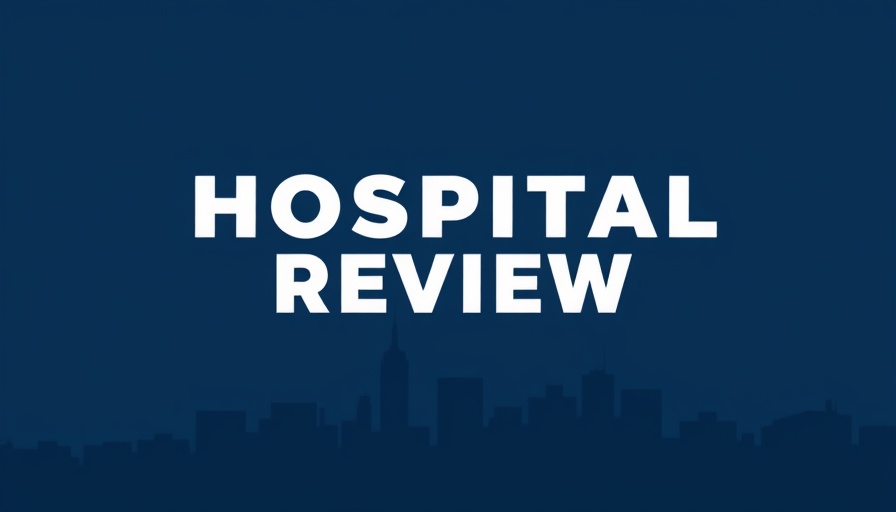
The Controversy Over The Leapfrog Hospital Safety Grades
In the realm of hospital quality assessments, the recent grades released by The Leapfrog Group have stirred significant controversy. A number of hospitals, including Piedmont Medical Center and several facilities within the Huntsville Hospital Health System, have pushed back against their low ratings, asserting that the evaluations do not accurately reflect their safety and quality performance.
Why Hospitals Are Rebuking Their Grades
The hospitals received low scores—some as low as “D” or “F”—which, they argue, stemmed from incomplete data submissions to Leapfrog’s biannual safety survey. The Huntsville hospitals publicly claimed that Leapfrog published these misleading ratings despite their lack of full information, indicating a gap in the assessment process.
Leah Binder, president and CEO of Leapfrog, defended the organization’s methodology, stating that nearly 20% of the evaluated hospitals chose not to participate in the survey. Despite this absence of data, many hospitals still achieved higher grades based on other measures that were available. This highlights an important takeaway for healthcare providers: participation in comprehensive evaluations can significantly impact the ratings.
The Roots of the Discontent
For many hospitals, including those in Alabama, a priority in patient care is at stake. Huntsville Hospital and Madison Hospital expressed their commitment to allocate resources for a complete survey in the future. They contended that Leapfrog's grading system diminishes the efforts of healthcare workers striving for patient safety and quality care. This sentiment resonates strongly in a healthcare climate where reputation and public trust are paramount.
Unpacking the 'Pay-to-Play' Allegation
While some hospitals allege that Leapfrog operates a “pay-to-play” system, where institutions that invest resources into the survey receive favorable ratings, Binder argues that this is a misconception. She emphasized that Leapfrog does not charge hospitals for participation or favor their data based on financial contributions. Instead, the organization seeks to provide an equitable assessment of the hospitals' capabilities based on objective, standardized measures.
Exploring Patient Safety Insights
This situation brings to light a significant issue in healthcare evaluations—accurate patient safety indicators. Hospitals that have received low ratings should view this as an opportunity for introspection and improvement rather than as mere punishment. By focusing on the quality metrics provided by Leapfrog, such as those derived from the Centers for Medicare and Medicaid Services (CMS), institutions can enhance their performance and potentially recast their reputations moving forward.
Lessons Learned from the Leapfrog Scores
The fallout from low Leapfrog grades is reminiscent of trends in various industries, where customer ratings can make or break reputations. For independent physicians and healthcare providers, these scores can serve as a poignant reminder of the importance of transparency and consistent quality management practices. As awareness of patient safety metrics rises, ensuring compliance with quality standards will become increasingly critical.
What This Means for Independent Providers
For independent physicians and healthcare providers, understanding the intricacies of these ratings is crucial. Engaging in programs related to patient-facing metrics—like remote therapeutic monitoring (RTM) and healthcare compliance—can help foster a culture of safety and accountability. By implementing patient engagement tools and practice automation, providers can ensure that they are not only compliant but also successful in retaining patient trust and managing care effectively.
The Future of Hospital Ratings
As hospitals navigate the implications of their Leapfrog scores, it becomes clear that the healthcare landscape is evolving. There’s a push for a more transparent, metric-driven approach that emphasizes clinical outcomes and patient safety, which can ultimately lead to enhanced hospital practices and greater patient trust.
As the healthcare community reflects on these scores, it is crucial for facilities to realize the value of continuous improvement and transparent communication with patients. By making strides toward better quality measures, even those hospitals currently struggling with their Leapfrog ratings can rise to a higher standard in patient care.
Encouraging Proactive Measures in Healthcare
Independent healthcare providers face pressures similar to those of larger hospitals regarding patient feedback and safety perceptions. Hospitals and clinics should foster environments that emphasize safety and proactive quality improvements, which can then be communicated effectively to preserve patient relationships.
This instance serves as a call to action for healthcare professionals: understand the implications of safety ratings and leverage this knowledge to build community confidence and optimize practice revenue. Furthermore, exploring tools and technology—such as AI phone agents for better patient engagement or enhanced operational efficiencies—might also compress overhead costs, benefiting both the provider and their patients.
 Add Row
Add Row  Add
Add 




Write A Comment